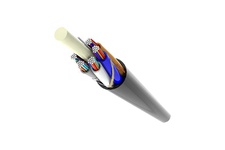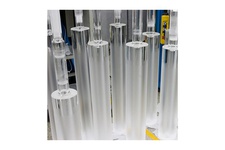| English | Select | |
| 한국어 | Select | |
| Русский | Select |

There are two types of underground optical cables. The first is duct line optical cables, where routing and operation take place in the installed communication duct line. The second type is direct burial optical cables, which are buried directly into the ground where duct line installation is difficult.
Duct line optical cables have a general, loose tube structure as mechanical and environmental properties are met by the communication duct lines, therefore not requiring any additional armor. Direct burial optical cables are exposed to various external environments; therefore take the structure of loose tubes with special armor.
Types and purposes
• Duct line optical cables
- A general, loose tube structure where routing and operation take place in the underground installed communication duct
- Classified into flooded type and dry core type (ordinary jelly, and special jelly for easy removal) according to waterproof methods at the core. We have a wide product range of all dry type cables.
• Direct burial optical cables
- Direct burial optical cables are buried directly into the ground. Special armor structure is applied.
- Classified into flooded type and dry core type (ordinary jelly, and special jelly for easy removal) according to waterproof methods at the core. We have a wide product range of all dry type cables.
- Classified into metal armor with steel tape, and non-metal armor with flat FRP armor.
Benefits
• Duct line optical cables
- Easy to identify optical fibers and tubes
- Sufficient reliability of routing and operation
• Direct burial optical cables
- Easy to identify optical fibers and tubes
- Stable structure that enables protection through internal cable and cable armor
- Excellent for protecting the cable from rodents (Metal steel tape armor, and non-metal flat FRP armor)
Main functions
• Duct line optical cables
- Long-distance and subscriber networks can be operated from the installed communication duct lines
- Optical backbone networks can be applied to trunk lines and distribution networks
• Direct burial optical cables
- In areas where duct line installation is difficult, long-distance and subscriber networks opt for direct burial
- Optical backbone networks can be applied to trunk lines and distribution networks











































































